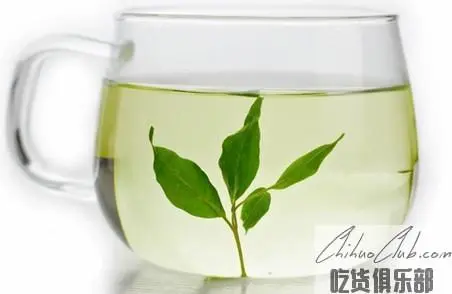
Yuqing broadleaf holly leaf
-
Update date::
-
Date of protection::
-
Protected range:The scope of protection of Yuqing Kudingcha GI products is based on the scope of the “Guidelines on Defining the Scope of Protection of Yuqing Kudingcha Geographical Indication Products” (Yu Zhengfa [2004] No. 42) of the Yuqing County People’s Government of Guizhou Province. The administrative area of Yuqing County is under the jurisdiction of the province.
-
Category:
Yuqing Kuding Tea is produced in Yuqing County, Zunyi City, Guizhou Province. It has the characteristics of bright green color, long-lasting fragrance, sweet taste, tight knot and unique taste.
Growing Environment Located in Yuqing County of Zunyi City, it is rich in lobular Kudingcha. It has 70,000 mu of natural wild Kuding tea resources and 37,000 mu of artificially cultivated dense planting demonstration tea. Yuqing xiaoye Kudingcha is a perennial evergreen plant, mainly grown in the area of 400-800 meters above sea level. The middle and lower layers of the mixed community have strong shade tolerance. The suitable growth conditions are temperature 14-17 ° C, the growing environment. The more humid, Ph value of 5-7 slightly acidic lime soil. Yuqing Xiaoye Kudingcha is a young plant that has been harvested from the buds of the genus Ranunculaceae. It is completely different from the “Big Leaf Kuding Tea” produced in Guangxi, Guangdong and Hainan. A substitute tea drink of caffeine, which grows in the karst landform of the Wujiang River Basin in Guizhou. The beautiful scenery here, without any environmental pollution, provides a unique growth environment for Xiaoye Kudingcha, which makes the quality of Xiaoye Kudingcha produced in Yuqing County excellent. Characteristics of tea products Kuding tea is tenderly picked, high-grade tea and famous tea are mainly processed by hand, and medium and low-grade and popular tea are mainly based on mechanism. The best time to pick is before and after the Qingming. The freshly picked tea leaves are carefully prepared through three processes: greening, simmering and melting. The product has a strip shape, a bright green color and a pure aroma. The tea brewed in clear water, the soup is green and bright, the taste is mellow, the entrance is slightly bitter, and the aftertaste is sweet. After the leaves are unfolded in the water, the leaves of the young shoots are green and the leaves are fresh. Yuqing Xiaoye Kuding Tea is characterized by lustrous green color, long-lasting fragrance and long-lasting taste. It tastes slightly bitter and sweet (slightly bitter and sweet), with tight knots and unique taste. It has the characteristics of “three greens”, namely dry tea green and leaves. The bottom is green and the soup is green. Yuqing Xiaoye Kudingcha was tested by the Analytical and Testing Center of Chengdu Branch of the Chinese Academy of Sciences. Its total sugar was 2.7%, reducing sugar was 1.01%, protein was 22.37%, tea polyphenol was 18.02%, water dissolved material was 52.37%, and it contained many amino acids. And the trace elements necessary for the human body, flavonoids, γ-amino acids and plant polysaccharides, sodium, potassium, selenium and other elements are higher, and the content of caffeine is extremely low at only 0.087%. Flavonoids can treat cardiovascular diseases; plant polysaccharides are physiologically active substances, which have the functions of lowering blood sugar, lowering blood fat, lowering blood pressure, anti-inflammatory, etc., and have no toxic and side effects; sodium and potassium are essential elements of the human body, and the blood pressure is high and low, Potassium is related. Therefore, Yuqing Xiaoye Kuding Tea is a substitute tea drink that integrates health care and medicinality. Yuqing Xiaoye Kudingcha has developed 5 series of products. The registered trademarks include “Yuyu”, “Shida”, “Shanlu Dan”, “Spring, Summer, Autumn and Winter” and “Yangchun Mountain Leaf”. At the initial processing point, there are 5 finishing factories, with an annual output of 5,000 tons of lobular Kudingcha, of which 20 tons are top grade Kudingcha.
Yuqing Kudingcha quality technical requirements (a) site conditions. At an altitude of 400 to 800 meters, the middle and lower layers of the mixed community have strong shade tolerance, a relatively humid environment, and a pH of 5 to 7 slightly acidic lime soil. (2) Cultivation management. 1. Farming: The density is 1000 to 1200 plants/666.7 meters (mu). Timely cultivating and weeding, keeping the soil loose, fertilizing with organic fertilizer, 666.7? (mu) of farmer's fertilizer more than 2000kg, 2 to 3 times a year. 2. Trimming: Control the top advantage and expand the three-dimensional picking surface. (3) Fresh leaves are picked. Picking in time and in batches according to the standard, the bud length is about 2?. (4) Processing technology. 1. The initial process: the initial process is divided into fresh leaf spreading → greening → dehydration → 揉捻 → two fry → shape → three stir fry → pot and other processes. (5) Quality characteristics. 1. Sensory: The color is green, the fragrance is long-lasting, the taste is slightly bitter and sweet, and the knot is tight. 2. Physical and chemical indicators: dry tea total amino acid content of 100 to 110mg / g, total sugar (as glucose) content of 180 to 240mg / g, polysaccharide (as glucose) content of 50.0 to 60.0mg / g, total flavonoids ( The content in terms of rutin is 70 to 90 mg/g. The tea leaf extract has a total amino acid content of 4 to 7 mg/g, total sugar (as glucose) content of 100 to 150 mg/g, and polysaccharide (as glucose) content of 13.0 to 15.0 mg/g, total flavonoids (with reed) The content is in the range of 3 to 6 mg/g.
Apply to:
Producers within the scope of protection of Yuqing Kudingcha GI products may submit an application to the Quality and Technical Supervision Bureau of Yuqing County for the use of “Special Marks for Geographical Indication Products”, which shall be approved by the General Administration of Quality Supervision, Inspection and Quarantine.